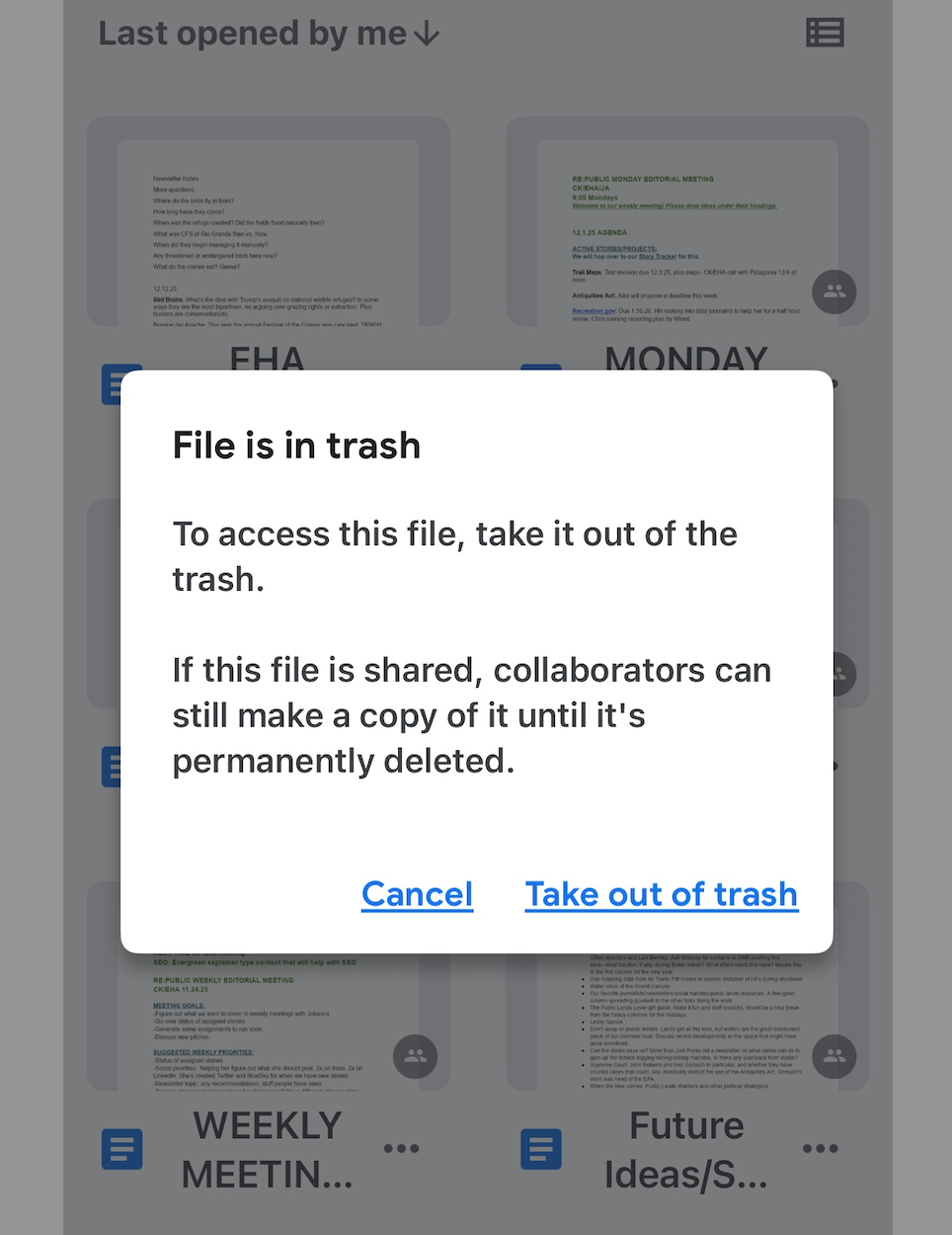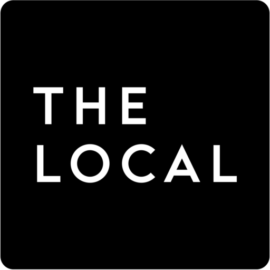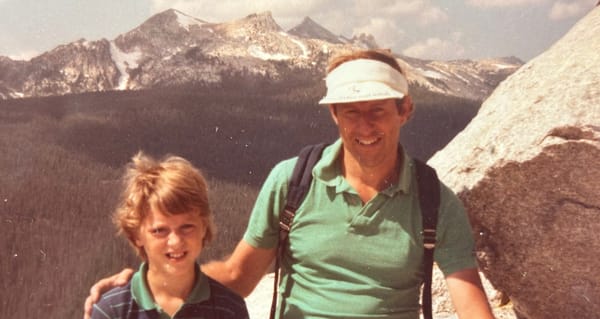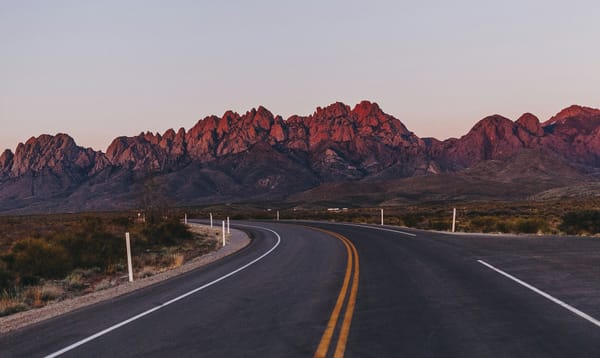Imposter Syndrome
That time RE:PUBLIC received an excellent story about #vanlife on public lands—that was apparently too good to be true.
About a month ago, I got an email from Elizabeth Hightower Allen, RE:PUBLIC's editorial director, updating me on the status of an assignment we were considering. A week prior, we received a promising story pitch from a writer named Victoria Goldiee, who wanted to explore the growing phenomenon of people on the fringes of poverty who are squatting on public lands, as well as the policy implications and challenges this issue presents for land managers and policymakers. The pitch was excellent, and before moving ahead, Elizabeth scheduled a call with the writer to ask her to flesh out her reporting plan. The email Elizabeth forwarded me was Goldiee's response.
"Here’s the detailed outline of my reporting plan as we discussed on our call," her email opened. What followed was more than a thousand words—nearly half the length of the "2,500–3,000-word reported essay" that she proposed—describing her plan to investigate "the collision between the romanticized vision of 'van life' and the complex reality of living long-term on public land."
We were impressed by her thoroughness and the smart way she framed the story—a sort of funhouse mirror examination of #vanlife that touched on an important public lands problem as well as the cost-of-living issues that are currently dominating the national conversation. Even better, she told us that she had lived in a van herself for several years, giving her personal experience to draw from.
Neither of us had ever worked with Goldiee before, but in her initial outreach, she listed a number of reputable outlets that had published her byline: the Guardian, New York Magazine, Nautilus, and more. A quick Google search confirmed she was indeed published in those places. Elizabeth spoke to her on the phone. The two of us had vetted dozens of story pitches since RE:PUBLIC launched in September, and hers was among the best. I sent Goldiee a contract.
A couple weeks later, we got her first draft. In many ways it was stellar—some beautiful writing and lots of quotes that gave it color. What was missing was some of the nuts-and-bolts reporting we had asked for, including more details and analysis of the land management issues that longterm camping presented to the Bureau of Land Management. How, we wanted her to explore in more detail, had the recent BLM personnel cuts affected the agency's ability to enforce the 14-day limit?
This is not unusual for a first draft. It's common to have to push writers for more reporting, especially when you're working together for the first time and the journalist isn't familiar with your outlet's expectations.
Still, there was something of an uncanny valley quality to the draft. It was difficult for either of us to articulate, but mild doubt was beginning to take shape. This exchange, after Elizabeth and I aligned on the revise notes she would send to Goldiee, illustrates our emerging concern.

Looking back, we probably should have pressed pause right then and pulled harder on those threads of doubt. But momentum was taking over. It is early days for RE:PUBLIC, and we were eager to finalize our next feature and hit our goal of publishing one big, impactful story every month—right out of the gate, as we promised our readers.
What's more, our model is built on co-publishing with existing outlets to reach established audiences, and thanks to our collective 50 years of working in commercial media, Elizabeth and I knew this story would be easy to sell to another outlet. Indeed, last week we had a call with a features editor at a major national publication to discuss potential co-publishing ideas. On the call, I asked Elizabeth to describe our van-life story to see if the editor was interested.
"Don't even continue," I remember the editor saying, interrupting Elizabeth halfway through her description. "This is right up my alley. I would love to take a look."
After the call, Elizabeth was reexamining the original pitch and the revised draft Goldiee had recently turned in, preparing to send them both on to the editor. But then, as she describes it, something gave her pause. The writer had done little to address our edit notes, and her revise was still in need of a lot of work. Since this was our first opportunity to co-publish with the major outlet, Elizabeth wanted to make sure the work she was sharing truly reflected our standards.
So Elizabeth decided to Google Goldiee's name one more time. Suddenly, on the first page of the search results, there was a new story that was published by The Local, a Toronto-based news outlet, the day before. Only this one wasn’t written by Goldiee, it was about her: "Investigating a Possible Scammer in Journalism's AI Era."

Elizabeth forwarded the story to me: "Read and let's talk..."
At this point, you should really go and read Nicholas Hune-Brown's story for yourself. He did a masterful job of following through on those same doubts that Elizabeth and I experienced, only he managed to get to the bottom of things before ever commissioning an assignment. It's an absolutely fascinating read. As is this follow-up interview with Hune-Brown in the Walrus.
For now, the Cliffs Notes version: Victoria Goldiee has apparently been committing journalism malpractice for a while. Among other violations, on several occasions she quoted expert sources in her stories whom she never actually talked to. In the last few weeks, as Hune-Brown reported, close to a dozen stories by Goldiee have been taken down at those same national outlets where we initially saw her byline and became impressed. It's unclear whether Goldiee was using AI to produce her pitches and drafts, but the sheer volume and range of her recent work—and the number of outlets we've since heard were involved—certainly points to that. It is still not clear if Goldiee is a single person, or the face of a team of writers. We don't even know what country she resides in. Or, for that matter, if she ever lived in a van.
As a Hail Mary, we did reach out to Goldiee last week to ask for her sources. We have not heard back. Elizabeth recently checked the working draft Goldiee had sent in via a shared Google Doc, and discovered it had been moved to a trash folder.

The day after this all went down, Elizabeth and I met for a post mortem: what lessons could we learn from this experience? The truth is, we didn't come up with a whole lot. We had had multiple email exchanges with Goldiee, her published clips checked out, and Elizabeth had spoken to her on the phone. (Though, notably, at the last minute, Goldiee had reached out to switch the call from video to voice-only because of a "poor internet connection"—the exact same thing she did when she was scheduled for a Zoom with Hune-Brown. But haven't we all done that at some point?)
Another reason this whole experience didn't cause me to think we need to reexamine our entire editorial process: we factcheck our feature-length stories. For those of you unfamiliar with this practice, it means we hire a third party contractor to essentially re-report each story, calling all the sources and looking over all the original source material to ensure accuracy. I am certain that when we eventually got to the factchecking stage for the #vanlife feature, we would have caught any problems well before publication.
No, rather than looking inward, this whole saga has me looking outward. What Goldiee was apparently doing is a symptom of a commercial-media business model that is broken. Thanks to widespread layoffs throughout the industry, editorial teams are increasingly short-staffed and individual editors are overwhelmed. At the same time, the need to monetize eyeballs means there is tremendous pressure to publish more stories, at a higher cadence, than ever before—all in the interest of hitting aggressive traffic goals. More traffic means more advertising dollars.
In this environment, few outlets have the time, let alone the budget, to factcheck stories or perform any other kinds of traditional pre-publication vetting. It's no wonder that a writer could fabricate stories—or parts of stories—and have them make it through to publication at multiple reputable outlets. It's also no wonder some freelance writers would feel tempted to try this; per-word writing rates are now less than they were when I started in this business—25 years ago! Throw in the recent rise of AI platforms that churn out polished copy on any topic at unimaginable speed, and you have the perfect conditions for this kind of scam to proliferate.
If nothing else, this whole saga makes us feel that we're on the right track at RE:PUBLIC by embracing the nonprofit model and asking readers to directly support the work we are doing. Journalism is hard, expensive, and absolutely vital to a healthy Democracy. Trust in journalism is at an all-time low, however, and we're just now entering the AI era, which threatens to obliterate what trust remains. The only way to combat this troubling set of facts is to support the work of real human journalists doing real human work—ideally at outlets unshackled from the primary motivation of turning a profit.
The one thing we must acknowledge is that Goldiee pitched us a terrific and timely story idea. Now we’re looking for a writer we can trust to report it for real.
Meet the Team

Damien Huang, Board Member | Seattle, WA
I first met Damien when we were freshman at Duke University, where we bonded over a common interest in fly-fishing, camping, and missing the West Coast. I distinctly remember our other friends looking at us like we'd lost our minds when we decided to forego the annual spring break sojourn to Panama Beach to spend a week backpacking and fishing in Great Smokey Mountain National Park. After college, we followed parallel tracks in the outdoor industry; while I worked my way up in journalism to become the editor of Outside, Damien thrived in the business world, holding product roles at The North Face and Patagonia, then rising to CEO roles at Eddie Bauer and Cotopaxi. Though we swam in the same circles, our work rarely overlapped, so it thrills me that RE:PUBLIC has brought us back into close contact.
Favorite public land: The Frank Church - River of No Return Wilderness
Why did you join RE:PUBLIC? The outdoors have been an irreplaceable part of my personal, professional, and spiritual life. America’s public lands are a unique asset like no other, and it is vital in our democracy to have thoughtful, accurate information about public lands issues.
What's one public land you think everyone should visit once? I recommend the Boundary Waters for the vastness of that wilderness, the uniqueness of individual lakes and the experiences one can have exploring, and because it requires knowledge of navigation and orienteering. It’s also shared with Canada (Quetico). I spent a week there and it felt like I covered about 2 or 3 inches of a map that nearly covered the whole table. It’s a special kind of beauty too, being on a flat, forested, water filled plain that you must paddle through and around.
The Good, the Bad, and the Ugly
Every Friday, our team shares critical stories about public lands from around the internet. This list could be exhaustive and exhausting, but our intent is to inform, not overwhelm. Instead, we choose three to five important stories you should be aware of—including at least one piece of good news.
The Good: Communities across the West are standing up for public lands "Resolutions opposing the sell-off of public lands have recently passed in counties and towns in California, Idaho, and New Mexico, demonstrating widespread support for their conservation. Overall, over 60 Western communities have passed resolutions or sent letters opposing public lands sell-off. 'Our communities' health and economic wellbeing depend on the public lands,' said Mammoth Lakes, California, Mayor Chris Bubser. 'Outdoor recreational tourism contributes more than 70% of the dollars in our town’s general fund…but shifting policy at the federal level and failure to provide adequate funding are putting these irreplaceable natural spaces, and the hundreds of good-paying jobs that depend on them, at risk…It’s our responsibility to protect our public lands, and we’ll continue fighting to make sure they stay right where they belong: in public hands.'"
The Bad: Hundreds of Joshua trees were scorched during the shutdown "This was “a nightmare scenario,” said a firefighter with the park, who also spoke on condition of anonymity for fear of retaliation. During the last government shutdown six years ago, the revelation that vandals appeared to have chopped down a few of the Dr. Seuss-esque trees grabbed national headlines. In this instance, the firefighter estimates more than a thousand trees were torched. Brendan Cummings, conservation director for the Center for Biological Diversity, also surveyed the plants in the burn zone and came up with a similar estimate."
The Ugly: Trump Moves to Weaken the Endangered Species Act "One of the most contentious proposals would allow the government to assess economic factors, such as lost revenue from a ban on oil drilling near critical habitat, before deciding whether to list a species as endangered. The Endangered Species Act requires the government to consider only the best available science when making these decisions. Another change would make it harder to protect species from threats that could occur in the future, like effects of climate change that could materialize in the decades to come."





